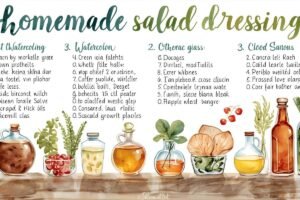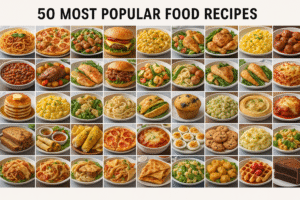In today’s fast-paced world, finding a meal that’s both quick to prepare and bursting with flavor can feel like an impossible task. Enter masala pasta—a revolutionary fusion dish that brilliantly marries the comfort of Italian pasta with the bold, aromatic spices of Indian cuisine. This spicy pasta recipe has taken kitchens by storm, offering a perfect solution for busy weeknights when you crave something exciting but don’t have hours to spend cooking.
The beauty of masala pasta lies in its versatility and simplicity. Unlike traditional pasta dishes that rely heavily on cheese and cream, or classic Indian curries that require lengthy preparation, this fusion creation delivers maximum flavor in minimal time. Whether you’re a college student looking for a quick meal, a working professional racing against the clock, or a parent trying to please picky eaters, this 15-minute pasta recipe is your culinary savior.
What makes this dish truly special is how it respects both culinary traditions while creating something entirely new. The al dente texture of perfectly cooked pasta provides the ideal canvas for a vibrant masala sauce infused with cumin, turmeric, garam masala, and fiery red chili powder. Add colorful bell peppers, juicy tomatoes, and aromatic onions, and you’ve got a complete meal that’s as nutritious as it is delicious. This Indian pasta fusion proves that you don’t need to choose between comfort food and exciting flavors—you can have both on one plate.
Why Masala Pasta is the Ultimate Fusion Food
The Perfect Marriage of Two Culinary Worlds
Fusion cuisine has become increasingly popular as food lovers seek novel taste experiences, and masala pasta represents one of the most successful cross-cultural culinary experiments. Italian pasta, loved worldwide for its satisfying texture and versatility, meets Indian spices that have been perfected over thousands of years. This combination isn’t just random—it’s strategic. The neutral flavor profile of pasta allows it to absorb the complex spice blends without overwhelming the palate.
The Indo-Italian fusion works because both cuisines share a fundamental appreciation for bold flavors and generous use of aromatics like garlic and onions. Where Italian cooking might use basil and oregano, Indian cuisine employs cilantro and curry leaves. Both traditions understand the importance of building layers of flavor, making them natural companions in the kitchen.
Health Benefits You Can’t Ignore
Beyond taste, masala pasta offers impressive nutritional advantages. The vegetables commonly used—bell peppers, tomatoes, peas, and onions—provide essential vitamins, minerals, and antioxidants. Indian spices like turmeric contain curcumin, a powerful anti-inflammatory compound, while cumin aids digestion. When you prepare this healthy pasta recipe at home, you control the oil, salt, and spice levels, making it significantly healthier than most restaurant versions or processed ready-to-eat meals.
Essential Ingredients for Perfect Masala Pasta
The Pasta Base
Choosing the right pasta is crucial for this spicy fusion recipe. Penne, fusilli, or macaroni work best because their shapes trap the masala sauce beautifully. Whole wheat pasta adds extra fiber, while regular semolina pasta provides the classic texture. Cook your pasta al dente—firm to the bite—because it will continue cooking slightly when mixed with the hot masala sauce.
The Spice Arsenal
The soul of any masala pasta recipe lies in its spices. You’ll need:
- Cumin seeds (jeera) for earthy warmth
- Turmeric powder (haldi) for color and health benefits
- Red chili powder for heat
- Garam masala for complex aromatic depth
- Coriander powder (dhania) for subtle sweetness
- Black pepper for sharp spiciness
These Indian spices create layers of flavor that transform simple pasta into an extraordinary dish. Fresh ingredients like ginger-garlic paste add pungency and aroma that dried spices alone cannot achieve.
Vegetables and Aromatics
A proper vegetable pasta includes colorful additions: diced bell peppers (capsicum) in red, yellow, and green; ripe tomatoes for tanginess; green peas for sweetness; finely chopped onions for foundation flavor; and fresh cilantro for garnish. These vegetables not only enhance nutrition but also provide textural contrast and visual appeal.
Step-by-Step Masala Pasta Recipe
Preparation Phase
Before you start cooking your quick pasta recipe, mise en place is essential. Dice all vegetables into uniform sizes for even cooking. Measure your spices. Boil water in a large pot with salt—this is your pasta cooking water. Have everything within arm’s reach because this fast dinner recipe moves quickly once you begin.
Cooking the Pasta
Bring salted water to a rolling boil and add your chosen pasta. Cook according to package directions minus one minute—you want it slightly underdone. Before draining, reserve one cup of pasta water. This starchy liquid is gold for adjusting your sauce consistency later. Drain the pasta and toss with a tiny drizzle of oil to prevent sticking.
Creating the Masala Base
Heat two tablespoons of oil or ghee in a large pan over medium heat. Add cumin seeds and let them sizzle for 30 seconds until fragrant. Toss in chopped onions and sauté until translucent, about 3-4 minutes. Add ginger-garlic paste and cook for another minute until the raw smell disappears. This forms the aromatic foundation of your Indian-style pasta.
Now add diced tomatoes and cook until they soften and release their moisture, about 5 minutes. The tomatoes will break down and create a sauce-like consistency. This is when you introduce your dry spices: turmeric, red chili powder, coriander powder, and salt. Stir well to coat the vegetables evenly.
Bringing It All Together
Add the remaining vegetables—bell peppers and peas—and cook for 2-3 minutes until slightly tender but still crisp. Pour in the cooked pasta and toss everything together vigorously. If the mixture seems dry, add reserved pasta water, a splash at a time, until you achieve your desired consistency. Sprinkle garam masala for that final flavor boost. Garnish with fresh cilantro and a squeeze of lemon juice for brightness.
Pro Tips for Restaurant-Quality Masala Pasta
Balancing the Spice Levels
Not everyone has the same heat tolerance, so adjust your spicy pasta according to preference. Start with less chili powder and taste as you go—you can always add more but can’t remove it. For a milder version, use Kashmiri red chili powder, which provides color without excessive heat. Balance spiciness with a dollop of yogurt or a squeeze of lemon juice.
Texture Matters
The key to professional-quality masala pasta is maintaining distinct textures. Your pasta should be al dente, vegetables should have a slight crunch, and the sauce should coat everything without becoming soupy. Overcooking any component creates mushiness that diminishes the eating experience.
Flavor Enhancements
Elevate your fusion pasta recipe with these chef tricks: finish with a pat of butter for richness, add a splash of cream for luxurious mouthfeel, incorporate kasuri methi (dried fenugreek leaves) for authentic Indian restaurant flavor, or top with grated cheese for extra indulgence. Fresh curry leaves fried in oil add an incomparable aroma.
Variations to Keep Things Exciting
Protein-Packed Versions
Transform your masala pasta into a complete meal by adding proteins. Paneer cubes (Indian cottage cheese) work beautifully, absorbing the spices while maintaining their firm texture. Grilled chicken pieces add lean protein, while chickpeas provide a vegetarian protein boost. Sautéed shrimp creates an elegant version perfect for dinner parties.
Regional Indian Twists
Different regions of India can inspire unique pasta variations. A South Indian version might include curry leaves, mustard seeds, and coconut; a Punjabi style could feature cream and butter for richness; a Gujarati twist might add a touch of jaggery for subtle sweetness; while a Bengali interpretation could incorporate poppy seed paste for nutty depth.
Dietary Adaptations
Make this healthy fusion recipe work for various dietary needs. Use gluten-free pasta for celiac-friendly versions, substitute nutritional yeast for cheese in vegan preparations, increase vegetables and decrease pasta for low-carb versions, or use whole grain pasta for added fiber and nutrients.
Common Mistakes to Avoid
Many home cooks struggle with masala pasta because they overcook the pasta into mushiness or add too much water, creating soup instead of a properly sauced dish. Others skimp on spices, resulting in bland pasta, or add vegetables too early, causing them to become limp and unappetizing. The timing of each step matters significantly in this quick recipe.
Another frequent error is not properly sautéing the spices. Raw spice powder tastes bitter and harsh—cooking them briefly in oil releases their essential oils and creates depth. Additionally, skipping the pasta water reservation is a mistake; this starchy liquid is the secret to creating a sauce that clings beautifully to every pasta piece.
Serving Suggestions and Pairings
Serve your masala pasta hot, garnished generously with fresh cilantro and a wedge of lemon on the side. Pair it with cool cucumber raita to balance the heat, or serve alongside garlic bread for textural contrast. A simple green salad with tangy dressing complements the rich flavors perfectly. For beverages, consider chilled buttermilk (chaas), sweet lassi, or even a crisp white wine for dinner parties.
Storage and Reheating Tips
Masala pasta stores well in an airtight container in the refrigerator for up to three days. The flavors actually deepen overnight, making leftovers even more delicious. When reheating, add a splash of water or milk to restore moisture, as pasta absorbs liquid over time. Microwave in short intervals, stirring between each, or reheat gently on the stovetop. Avoid freezing, as the vegetables and pasta texture deteriorate significantly.
Conclusion
This amazing masala pasta recipe proves that fusion cooking isn’t just a trend—it’s a practical solution for modern kitchens where time is precious but flavor cannot be compromised. In just 15 minutes, you can create a restaurant-quality spicy fusion dish that satisfies diverse palates and dietary preferences. The combination of Italian pasta with Indian spices creates something greater than the sum of its parts—a comforting yet exciting meal that works for lunch, dinner, or even as party food.
The beauty of this Indo-Italian fusion lies in its flexibility. Once you master the basic technique, you can experiment endlessly with different vegetables, proteins, and spice combinations. Whether you prefer it fiery hot or mildly spiced, loaded with vegetables or enriched with cream, this versatile recipe adapts to your preferences while always delivering satisfaction.
So the next time you’re staring into your pantry wondering what to cook, remember that you’re just 15 minutes away from a plate of delicious masala pasta that combines the best of two incredible culinary traditions. This is fusion cooking at its finest—accessible, delicious, and absolutely unforgettable.
Read More: 10 Ultimate Fall Crockpot Dinner Recipes for Families








